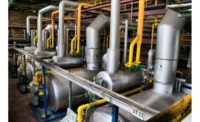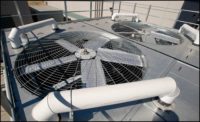Two of the most crucial points in a boiler’s operation are startup and shutdown. These tasks are key to safe, efficient boiler operation. Missing a step, or otherwise messing with the process, could cause a lot of damage to the boiler system and anyone in the vicinity.
The Area
The first thing to check before startup is the area around the boiler. Make sure there is no trash, debris, or anything flammable nearby. Check for water leaks or puddles where they aren’t supposed to be. Check all the insulation, support structures, brackets, and other physical parts of the area in and around the boiler. Make sure everything looks right and there are no loose pieces, loose insulation, or any corroded or rusted areas.
The Water
Since a boiler’s main purpose is to generate steam, it’s best to start with the stuff that makes the steam: water. The water in the boiler has to be at the right level, properly conditioned, and free of unwanted impurities and sediments. Check the water’s pH, softness, or quality regularly. If the boiler has been shut down for an extended period, follow the proper safeguards and procedures to check the quality of the water.
If the water has too much sediment or too many impurities in it, that can cause a lot of problems down the road. If that sediment collects in the boiler tank, it can affect the boiler’s efficiency and safety. Bad water can also cause scaling in sight glasses, gauges, and water column connections, causing them to lose accuracy. Be sure to check those as well. Make sure the gauges and glass are free of sediment, scale, or other things floating around inside. They need to be clean, clear, and easy to read. If readings are inaccurate, the system’s efficiency, and the end user’s safety, are at risk.
If the water quality is where it’s supposed to be, check the water level next. Make sure it’s within spec for startup. Then, add feedwater or drain some away until it’s at the right level. If there is too much water, it’s going to take longer for the boiler to start generating the steam. If there is too little water, the boiler is at risk. Without enough water, the firetubes inside the boiler tank may overheat, causing a lot of thermal stress, which may cause cracks, leaks, and explosions.
The Air
If you have fuel flowing into the fireside, air will be needed to support combustion. Make sure air intake valves and dampers, including primary and secondary dampers, are operating properly and free of obstruction.
Check the exhaust system as well. Make sure the flue dampers are functioning properly and nothing is jammed or misaligned.
Be sure to check the operation of the draft fans, too. Ensure there is enough air coming in to support combustion and that a user has the ability to vent the fireside quickly and efficiently if something goes wrong.
The Fire
The fireside makes the heat that turns clean, properly conditioned water into useable steam. But it’s not as easy as just turning on the gas or oil and tossing in a match. Ignition must be performed carefully, deliberately, and with the right step-by-step process.
A few key things to remember for a safe startup:
• Check for fuel leaks with the proper testing equipment. Undetected leaks can lead to easily detectable explosions.
• Carefully check the fuel valves. If a valve is stuck or malfunctioning, uneven flow may emerge, causing uneven heat through the fire tubes. As we all know from a minute ago, uneven heat causes thermal stress that leads to very bad things.
• Vent the fireside before beginning the ignition process. This lessens the risk of igniting any fuel that’s hanging around, creating an explosion that could ruin the boiler.
• Never let one burner light off of another. Before the unlit one ignites, it’ll have time to build up some extra fuel all around it, causing potentially dangerous puff-back. There’s no magic to that dragon.
Initial Operation
Once the fireside is firing properly, it’s time to pay attention to what’s happening in the boiler tank. To get the boiler up and online safely, this has to be done at the right pace with the right steps. If a boiler is rushed online, the user could end up causing damage to the boiler, losing efficiency and shortening the equipment’s life considerably.
A few things to remember:
• Never add cold water to a running boiler. Doing so could cause the boiler to warp, rupture, leak, crack, and/or explode. And nobody wants that; and
• Always keep the boiler at low fire until the belly of the system is at least 250°F. Or get the steam pressure up to 15 psi for a high-pressure boiler or 5 psi for low pressure before switching it to automatic. If the boiler fires too hard when it’s cold, the tubes and tubesheets could be damaged from the stress of heating up too quickly.
Shutdown
Like startup, shutdown must be performed at the right pace with every step in the procedure done in the right order.
For a safe shutdown, it’s best to bring the boiler back to low fire for one minute before shutting it off. Do not kill power to the boiler or feedwater pumps. Remember, the boiler will continue making steam for a while because of the residual heat in the metal and refractory in the boiler. The feed pumps must be allowed to continue adding water as steam is made until all the heat is gone. Once everything is cooled off, the power can then be shut down.
Remember, safe boiler operation requires specific procedures and common sense. For more information regarding how boilers operate, visit the technical training facility WARE Boiler U. Experience is a good teacher, but the best teacher is a qualified boiler expert.




